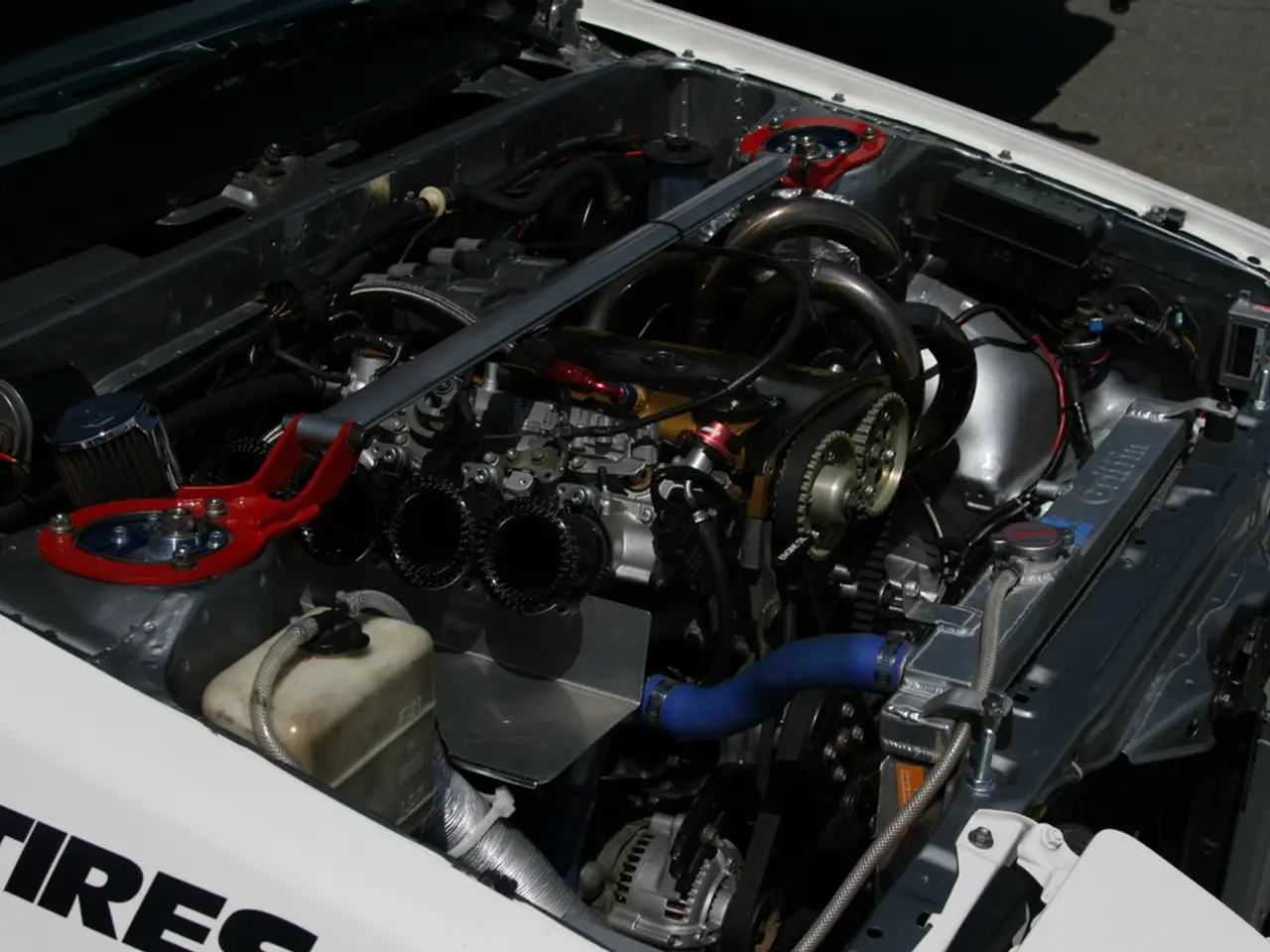Enhanced 24-volt Lithium-ion Battery Technology for Solar Energy Professionals
In the rapidly evolving world of renewable energy, 24V lithium-ion batteries are making a significant impact. These modern batteries offer numerous advantages over traditional lead-acid batteries, making them an ideal choice for solar installations.
Superior Service Life
Modern 24V lithium-ion batteries, such as those using LiFePO4 chemistry, offer substantially longer cycle life—often between 2,000 to 8,000 cycles—compared to lead-acid batteries, which typically have a cycle life of 500 to 1,000 cycles. This translates to roughly 8-10 years of service life for lithium-ion compared to 3-5 years for lead-acid[2][3][4].
Enhanced Performance
Lithium-ion batteries have higher energy efficiency (around 95%) compared to lead-acid (80-85%), meaning more solar energy is usable. They allow a deeper Depth of Discharge (DoD), up to 80-100%, versus about 50% for lead-acid, providing significantly more usable stored energy per battery capacity. Lithium-ion also delivers consistent power output throughout discharge, whereas lead-acid voltage drops causing dimming or slowing of devices[1][3].
Improved Safety
LiFePO4 lithium-ion batteries are chemically more stable and less prone to overheating or explosions compared to traditional lithium-ion and lead-acid batteries. Lead-acid batteries can emit hazardous gases and pose acid leakage risks. Lithium-ion batteries with battery management systems (BMS) enhance safety further and maintain stable operation even under temperature extremes[4].
Lower Maintenance Requirements
Lead-acid batteries require regular maintenance including water refilling and equalization charges. Lithium-ion batteries are largely maintenance-free with no need for water checks or topping off electrolytes. This reduces operational complexity and risk of battery damage[3][5].
Compliance with Regulations and Standards
When integrating 24V lithium-ion battery systems, it's crucial to comply with NEC Article 706 guidelines for energy storage systems, including disconnecting means and overcurrent protection.
Advanced Features
Features like AI-driven load management, virtual power plant integration, and enhanced cybersecurity protocols will become increasingly vital. These advanced features not only optimize the performance of the battery system but also ensure its security.
Hybrid-Ready Design
The hybrid-ready design supports smooth switching of the system from grid-tied to off-grid operation. This flexibility is essential for ensuring the system's reliability during power outages or grid instability.
During commissioning, thermal imaging scans are undertaken to recognize possible hot spots or connection issues.
Calculating Capacity and Site Evaluation
For a typical residential installation, calculate required capacity by multiplying average daily consumption by desired backup days, then adding a 20% safety margin. The site evaluation phase requires careful analysis of installation space constraints, ambient temperature ranges, and ventilation capabilities. Identifying strategic locations for temperature sensors throughout the battery enclosure is necessary to control the thermal regime effectively.
A comprehensive client assessment is necessary to evaluate current energy usage patterns, future expansion plans, and specific backup power requirements. Elite manufacturers have started to provide recycling programs and environmental management system certification.
Selecting Inverters, Charge Controllers, Suppliers, and Wiring Configuration
When selecting inverters and charge controllers, consider voltage windows, communication protocols, and surge expectations. When selecting suppliers, prioritize comprehensive certifications, robust quality control processes, and responsive technical support. Correct wiring configuration is necessary to maintain a stable voltage across the system, with parallel connections applied for battery banks through appropriately rated cable sizes and equal cable lengths.
The Future of Solar Energy Storage
The time to upgrade to advanced lithium-ion technology is now. Your solar business's competitive edge depends on it. The adoption of 24V lithium-ion battery technology offers extended cycle life, superior depth of discharge, and intelligent monitoring capabilities.
Artificial intelligence integration brings the greatest benefit with load forecasting, adjusting charging behavior according to weather forecasts, historical usage data, and grid demand signals. The integration of these battery systems, supported by thorough design practices and optimized installation methods, provides solar businesses with a reliable foundation for growth.
Forward-thinking installers who embrace these advanced battery solutions position themselves at the forefront of the renewable energy revolution. Modern lithium-ion battery systems feature over-the-air update capabilities to keep up with changes in grid codes and energy standards.
In conclusion, for solar energy storage, 24V lithium-ion batteries provide longer lifespan, higher usable capacity, improved safety, and much lower maintenance compared to traditional lead-acid batteries, making them a superior choice for modern solar installations[1][2][3][4][5].
- The finance industry can benefit significantly from the adoption of 24V lithium-ion batteries, as these renewable energy solutions offer lower maintenance requirements, reducing operational costs for solar energy storage systems.
- The technology sector plays a crucial role in the advancement of the renewable energy industry, particularly in the development of AI-driven features for 24V lithium-ion batteries, such as load management, virtual power plant integration, and enhanced cybersecurity protocols.
- Data and cloud computing are essential for optimizing the performance of 24V lithium-ion battery systems, enabling features like load forecasting, weather-based charging behaviors, and monitoring the battery's health using grid demand signals and historical usage data.




